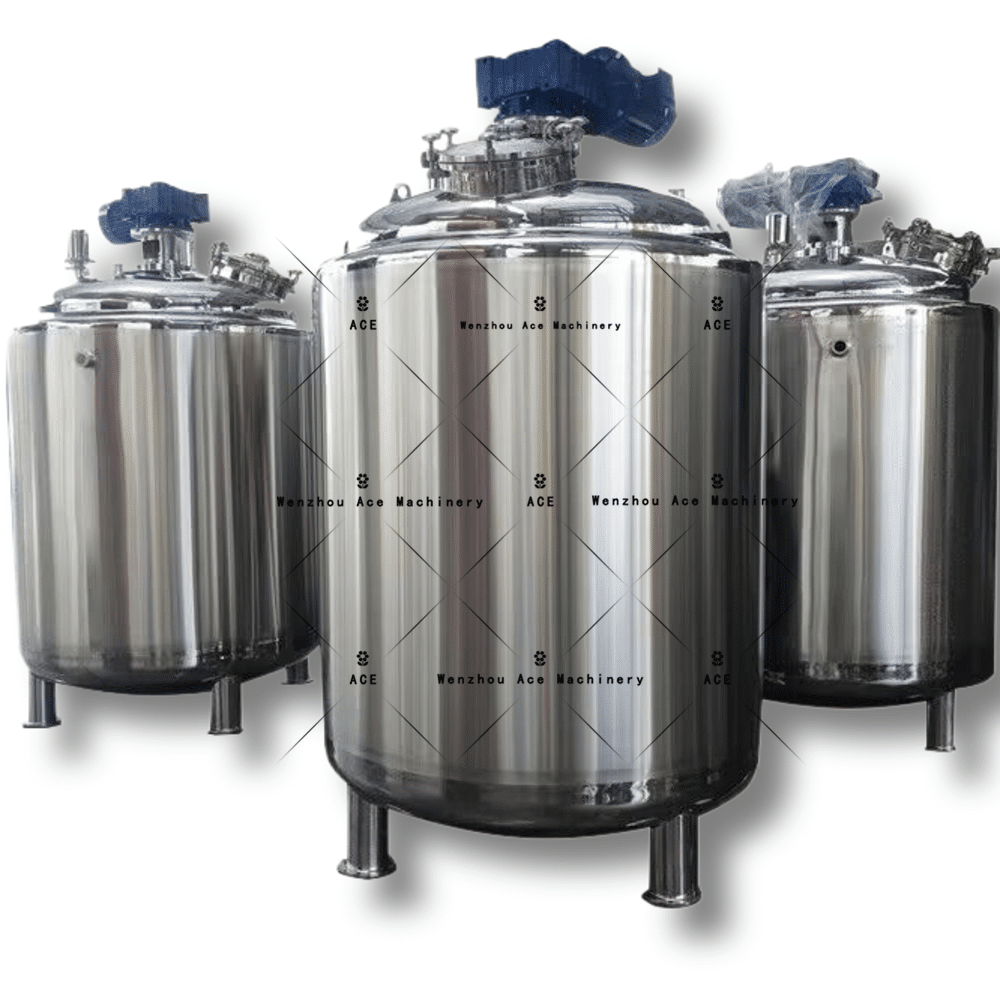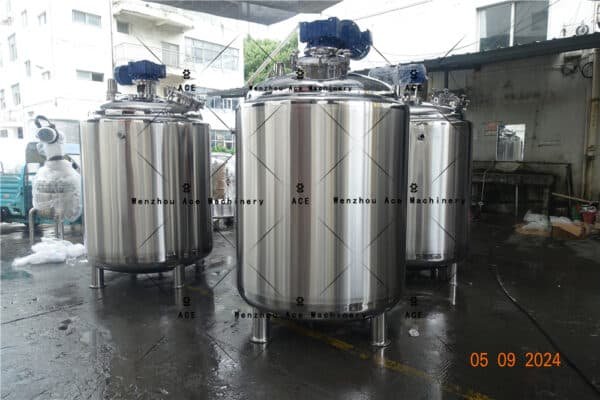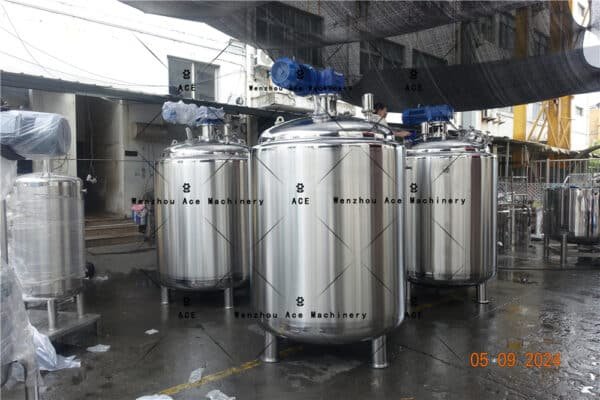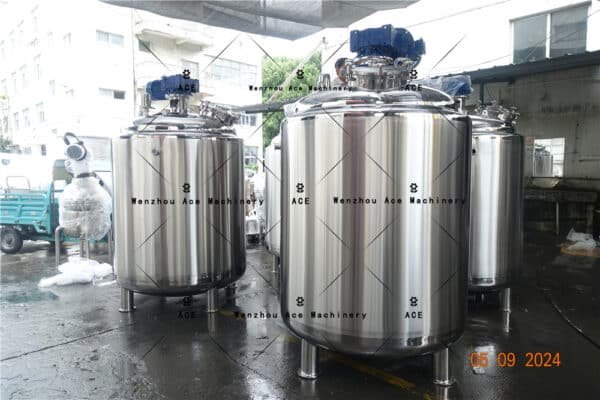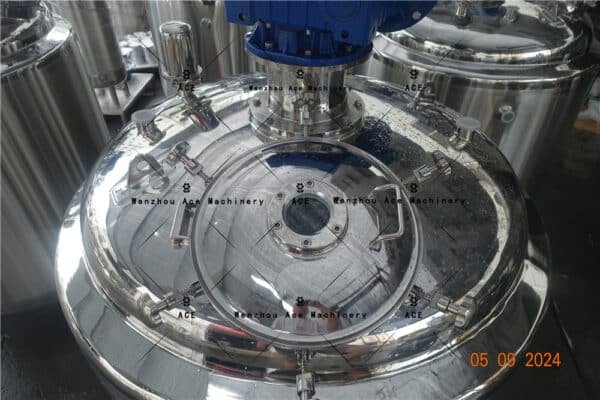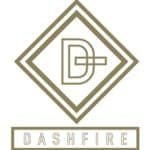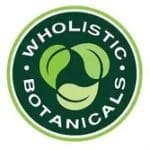Material Options: 304 and 316L Stainless Steel
Our stirred tank reactors are available in two high-quality stainless steel options:
304 Stainless Steel
This material is a popular and cost-effective choice that provides excellent corrosion resistance for most general applications.
316L Stainless Steel
With higher resistance to corrosion, particularly from chlorides and acidic environments, 316L stainless steel is ideal for more aggressive conditions. It is commonly used in the pharmaceutical, chemical, and marine industries, where exposure to harsh substances is frequent. The low carbon content of 316L reduces the risk of carbide precipitation during welding and high-temperature operations, making it a preferred choice for demanding environments.
Both material options ensure long-lasting durability, structural strength, and safety under heavy operating conditions.
Agitator Options
One of the defining features of our stirred tank reactors is the availability of different agitators tailored to enhance performance across a wide range of applications. We offer multiple types of agitators, including:
Anchor Agitator
Ideal for high-viscosity fluids, the anchor agitator ensures complete and uniform mixing of thick solutions.
Turbine Agitator
Perfect for emulsification and dispersion of low-viscosity liquids, generating sufficient shear forces to blend the materials effectively.
Propeller Agitator
A versatile, general-purpose agitator suitable for most mixing applications, particularly those requiring uniformity and regular suspension of fluids.
The diverse range of agitators ensures that our stirred tank reactors meet the specific needs of various industries and chemical processes.
Jacketed Design for Heat Transfer
Our stirred tank reactors feature a three-layer jacketed design, which is essential for precise temperature control during reactions. The jacket facilitates the transfer of heating or cooling fluids, ensuring that the reactor maintains the desired process temperature. This design is crucial for operations where temperature control is necessary to achieve optimal reaction products.
Heating Options
Two heating methods are available depending on your process requirements:
Electric Heating
With a power range of 1.5 kW to 55 kW, electric heating provides clean, efficient temperature control for smaller installations. It is easy to install and delivers accurate temperature regulation.
Steam Heating
In industrial settings, steam heating is a cost-effective solution for temperature control in larger reactors. This method is ideal for continuous processes requiring high heating rates and is commonly used in large-scale plants.
Power and Voltage Options
Our stirred tank reactors are designed to accommodate various power and voltage requirements based on your operational scale. Power options range from 1.5 kW to 55 kW, while voltage options range from 110V to 600V. This flexibility allows our reactors to be easily integrated into industrial applications worldwide, regardless of the region’s electrical configuration.
Applications of Stirred Tank Reactors
Stirred tank reactors are versatile and widely used across multiple industries, including:
Chemical Industry
Used in the manufacture of fine chemicals, petrochemicals, and polymers, STRs are essential for efficient and precise chemical reactions.
Pharmaceutical Industry
STRs play a vital role in the synthesis of active pharmaceutical ingredients (API), fermentation, and bioprocessing, ensuring uniform mixing and strict process control.
Food and Beverage Industry
STRs are used in the production of sauces, syrups, and beverages, where directed mixing and regulated temperatures are required to maintain product consistency and quality.
Environmental Applications
STRs are commonly used in wastewater treatment technologies, where they enhance the aerobic biodegradation of organic compounds, improving effluent quality and treatment efficiency.
The versatility of STRs allows them to be employed in batch, semi-batch, and continuous operations, with various customization options available depending on process requirements.
Common Questions (FAQ)
Q1: What distinguishes 304 stainless steel from 316L stainless steel?
304 stainless steel is more affordable and provides general-purpose corrosion resistance. In contrast, 316L stainless steel offers greater chemical resistance, making it better suited for harsh conditions such as those encountered in pharmaceutical or marine environments.
Q2: How do I choose the right agitator for my process?
The choice of agitator depends on the viscosity and type of liquid being mixed. Anchor agitators are ideal for high-viscosity fluids, while turbine agitators are better for low-viscosity liquids or emulsifications. For general mixing applications, propeller agitators are suitable.
Q3: What heating options are available?
We offer electric heating (1.5 kW to 55 kW) for smaller reactors and steam heating for larger, industrial-scale reactors. Both options provide effective temperature control, depending on your operational needs.
Q4: Can I customize the voltage specifications?
Yes, our reactors support voltage ranges from 110V to 600V, ensuring compatibility with electrical systems in various regions.
Q5: How do I maintain my stirred tank reactor?
Regular cleaning and inspection of the agitator, seals, and jacketed heating system will ensure optimal performance. 316L stainless steel reactors require less maintenance in corrosive environments due to their superior resistance properties.
Contact Us for Custom Stirred Tank Reactor Solutions
Are you looking to improve your production process with high-quality stirred tank reactors? Our team of experts is ready to assist you in selecting the right reactor for your specific needs. We offer custom solutions to meet the unique requirements of your industry.
Contact us today to learn more about our products and receive a tailored quote!

